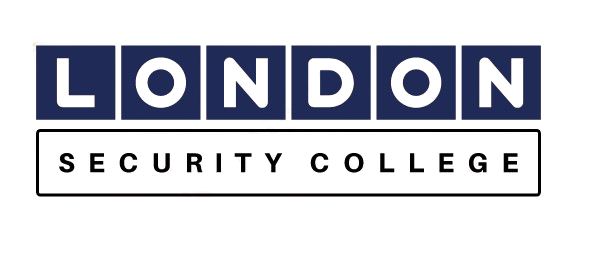Assessing Weak Points in your Site
Every site has strong points, and every site has weak points. Think of a chain, it is only as strong as its weakest link. As a Security Control Room (SCR) Operator, part of your responsibility is spotting those weak links before anyone else does. Weak points can be physical, like a gate that does not shut properly, or procedural, like staff who leave fire doors open for convenience.
Your role is not about memorising laws or codes, it is about applying professional judgement, vigilance, and teamwork to reduce risks. If weak points are left unchecked, they can quickly become entry routes for intruders, create safety hazards for staff, or damage your company’s reputation with clients.
What Are Weak Points?
A weak point is any area, habit, or system that could be exploited by unauthorised persons. Examples include:
A side entrance was left unlocked for “just a few minutes.”
Lighting failures around the perimeter that leave dark hiding spots
CCTV blind zones where activity cannot be properly monitored
Security staff rushing ID checks during busy periods
Identifying these areas is not about blaming people, it is about protecting everyone on site.
Real-World UK Example
At a busy warehouse, the delivery entrance was secured by a strong roller shutter. However, staff often left it half-open to “save time” between deliveries. One evening, an intruder slipped in unnoticed.
The barrier itself was strong, but the practice around it was weak. An SCR Operator who noticed the pattern of half-open shutters on CCTV could have raised the alarm earlier and prevented the incident.
Why It Matters
Protecting people first: Weak points are not just about theft, they can create dangers for staff and visitors.
Professional reputation: Clients trust security companies to spot risks before they become problems.
Legal responsibility: If a weak point leads to an incident, it may be investigated, and liability could fall on the security provider.
Operational efficiency: Fixing small issues early avoids costly repairs or major incidents later.
Spotting Weak Points from the Control Room
SCR Operators can identify weaknesses even without being physically on site. You can do this by:
Watching CCTV carefully: Look for areas where cameras do not overlap properly, leaving gaps.
Checking access logs: Look for unusual card use, repeated failed entries, or activity outside normal hours.
Following incident patterns: Multiple false alarms at the same location may indicate a real issue.
Talking to officers on the ground: They may notice faulty doors, broken locks, or staff shortcuts.
Human Behaviour – The Overlooked Weak Point
Many breaches do not happen because of failed technology, they happen because of people. An officer who leaves a door unlocked “just for a minute” or an employee who lets someone tailgate behind them without checking ID can create risks bigger than any broken gate.
As an operator, you should be alert to behaviour patterns on CCTV, such as repeated door propping, groups entering together, or contractors moving without escorts. These may look harmless but can be exploited by anyone with bad intentions.
Technology Can Fail Too
Security equipment is vital, but it is not perfect. Cameras can lose focus, bollards may jam, and electronic locks sometimes fail. Always be ready to spot warning signs, such as:
A door showing as “closed” on the system but appearing open on camera
Gates taking longer than normal to cycle open or shut
Lights flickering in car parks or stairwells
When you notice these issues, report and record them immediately. Technology failure is a weak point waiting to be exploited.
Smart Operator Tips
1. Step into an intruder’s shoes
Do not just watch the site as a security professional, ask yourself, “If I wanted to sneak in, where would I try?” This mindset helps you spot weaknesses that others overlook.
2. Logs are your best friend
A well-kept logbook is not just paperwork, it is proof of your professionalism. Accurate records protect you, support investigations, and show compliance with industry standards.
3. Fix little problems before they grow
Never dismiss a flickering light, a broken latch, or repeated false alarms. Small issues are often early warning signs of bigger risks. Report and escalate them quickly.
4. Teamwork is real security
An SCR Operator is part of a bigger security picture. Share information with patrol officers, supervisors, and maintenance teams. The stronger the communication, the stronger the site.
Did You Know?
Research shows that 60% of successful site breaches happen at weak points staff already knew about but failed to escalate.
Many intruders “test” weak points several times before a real attempt. If you spot repeated suspicious behaviour, it is often a sign of a bigger plan.
Scenario: What Would You Do?
You notice through CCTV that staff often prop open a fire exit at the rear of the site for cigarette breaks. At the same time, you know a delivery is scheduled at the main gate.
Do you ignore the fire exit because “it’s just staff”?
Do you log the issue and alert the site supervisor?
Do you monitor both the gate and the fire exit for unusual movement?
The correct approach is to log and escalate the weak point, while monitoring activity closely. Weak points often become distractions during busy times.
You Are the Site’s Safety Net
As an SCR Operator, your value lies in noticing what others miss. A door left ajar, a gate that does not close properly, or a shadow where there should be light can be the start of a serious breach. By spotting weak points, escalating quickly, and keeping accurate records, you are protecting lives, assets, and reputations.
Always remember, a site is never stronger than its weakest point, and you are the person who makes sure those weaknesses are not ignored.

